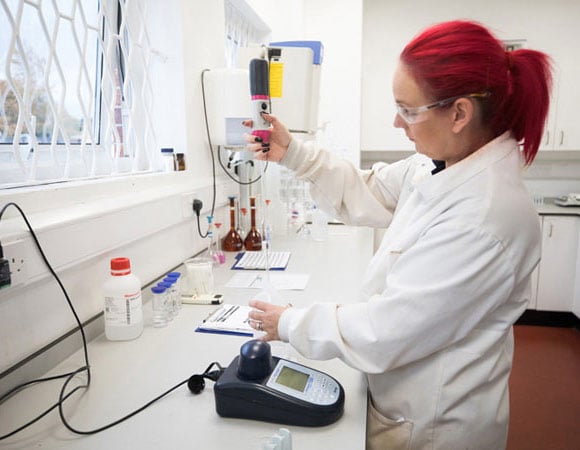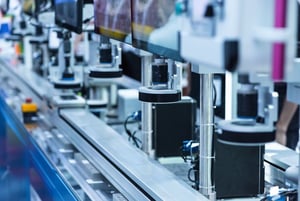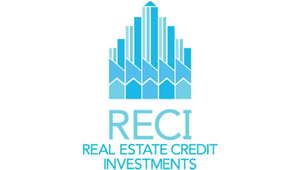Halma plc (LON:HLMA), the global group of life-saving technology companies focused on growing a safer, cleaner, healthier future for everyone, every day, has announced results for the 6 months to 30 September 2023.
Highlights
“Halma made good progress in the first half. The Group performance reflects the strength we derive from our Sustainable Growth Model and the long-term growth drivers that underpin our diverse portfolio. These enabled us to deliver record revenue, profit and dividend, while further enhancing our growth opportunities through increased strategic investment, supported by a strong cash flow performance and continued balance sheet strength. We remain on track to make further progress in the second half of the year.” Marc Ronchetti, Group Chief Executive.
Change | 2023/24 | 2022/23 | |||
| Revenue | +9% | £950.5m | £875.5m | ||
| Adjusted1 Earnings before Interest and Taxation (EBIT) | +7% | £189.9m | £177.9m | ||
| Adjusted1 Profit before Taxation | +3% | £177.5m | £171.7m | ||
| Adjusted Earnings per Share2 | +4% | 36.90p | 35.65p | ||
| Statutory Earnings before Interest and Taxation | +7% | £162.6m | £151.7m | ||
| Statutory Profit before Taxation | +3% | £150.2m | £145.5m | ||
| Statutory Earnings per Share | +3% | 31.39p | 30.39p | ||
| Interim Dividend per Share3 | +7% | 8.41p | 7.86p | ||
| Adjusted1 EBIT margin | (30)bps | 20.0% | 20.3% | ||
| Return on Sales4 | (90)bps | 18.7% | 19.6% | ||
| Return on Total Invested Capital5 | (60)bps | 13.2% | 13.8% | ||
· Record revenue and profit:
o Revenue +9%; organic constant currency6 (OCCY) revenue +5%;
o Adjusted1 Profit before Taxation +3%; OCCY6 in line with first half of last year;
o Statutory Profit before Taxation +3%.
· Healthy contribution from recent acquisitions7, adding over 5% to revenue and profit growth.
· Adjusted1 EBIT margin resilient at 20.0% (2022/23: 20.3%).
· Return on Sales4 of 18.7% (2022/23: 19.6%): principally reflecting higher net finance expense; compares to strong performance, above pre-COVID level, in 2022/23 first half.
· Continued strategic investment to support future growth:
o R&D investment up 5% to £52m, representing 5.5% of revenue;
o Five acquisitions completed in financial year to date (three in first half) for £126m maximum total consideration; healthy pipeline of potential acquisitions.
· Strong cash performance; continued balance sheet strength: cash conversion9 of 96% (2022/23: 63%), above 90% target; net debt/EBITDA 1.4 times, within operating range of up to 2 times.
· Revenue growth in all sectors:
o Safety: continued strong progress including good OCCY6 growth and healthy acquisition contribution;
o Environmental & Analysis: good reported and OCCY6 growth; includes very strong growth in photonics and water, partly offset by weaker trends in spectroscopy;
o Healthcare: modest reported growth; flat OCCY6 revenue reflects strong growth in sensors & analytics and ophthalmology therapeutics, offset by continuing OEM customer destocking, especially in Life Sciences, and budgetary caution at healthcare providers.
· Adjusted1 EBIT margin increase in Safety and Healthcare sectors; lower Environmental & Analysis margin mainly reflects reduction in higher margin spectroscopy revenue.
· Revenue growth in all regions except Asia Pacific: strong growth in largest regions of USA and Mainland Europe; Asia Pacific mainly reflects weaker China trends.
· Interim dividend +7%: reflects the Board’s continued confidence in the Group’s growth prospects in a continued uncertain environment.
Marc Ronchetti, Group Chief Executive of Halma, commented:
“Halma made good progress in the first half. The Group’s performance reflects the strength we derive from our Sustainable Growth Model and the long-term growth drivers that underpin our diverse portfolio. These enabled us to deliver record revenue, profit and dividend, while further enhancing our growth opportunities through increased strategic investment, supported by a strong cash flow performance and continued balance sheet strength.
The current operating environment presents both challenges and opportunities. Our continued success in current varied market conditions is enabled by our Sustainable Growth Model. We benefit from our focus on markets aligned to our purpose, which present substantial opportunities for growth underpinned by resilient, long-term growth drivers; from the portfolio and geographic diversity of our businesses; from our talented people and our collaborative and entrepreneurial culture; from the agility of our business model; and from the strength of our sustainable financial model.
We remain on track to make further progress in the second half of the year and to deliver good organic constant currency6 revenue growth in the full year to March 2024. Group order intake remains ahead of the comparable period last year and close to revenue in the year to date. Our current expectation is for full year 2024 Adjusted1 Profit before Taxation to be in line with analyst consensus expectations10.”
Notes:
1 Adjusted to remove the amortisation of acquired intangible assets; acquisition items; significant restructuring costs; and profit or (loss) on disposal of operations, totalling £27.3m (2022/23: £26.2m). See note 2 to the Condensed Interim Financial Statements for details.
2 Adjusted to remove the amortisation of acquired intangible assets, acquisition items, significant restructuring costs, profit or (loss) on disposal of operations and the associated taxation thereon. See note 2 to the Condensed Interim Financial Statements for details.
3 Interim dividend declared per share.
4 Return on Sales is defined as Adjusted1 Profit before Taxation from continuing operations expressed as a percentage of revenue from continuing operations.
5 Return on Total Invested Capital (ROTIC) is defined as post-tax Adjusted1 Profit as a percentage of average Total Invested Capital. See note 9 to the Condensed Interim Financial Statements for details.
6 Organic constant currency (OCCY) measures exclude the effect of movements in foreign exchange rates on the translation of revenue and Adjusted1 Profit into Sterling, as well as acquisitions in the year following completion and disposals. See note 9 to the Condensed Interim Financial Statements for details.
7 Net of disposals. The contribution to revenue or profit (as appropriate) from acquisitions made in the 12 months to 30 September 2023, less the effect on these measures from disposals made in the same period.
8 Adjusted1 Earnings before Interest and Taxation, Adjusted1 Profit before Taxation, Adjusted2 Earnings per Share, organic growth rates, Return on Sales, ROTIC and net debt are alternative performance measures used by management. See notes 2, 6 and 9 to the Condensed Interim Financial Statements for details.
9 Cash conversion is defined as adjusted operating cash flow as a percentage of adjusted operating profit. See note 9 to the Condensed Interim Financial Statements for details.
10 Consensus available at www.halma.com, based on an aggregation of publicly available forecasts, collated from eleven research analysts in the period 4 October 2023 to 11 October 2023 is for Adjusted1 Profit before Taxation of £389.0m in the full year to end March 2024, with a range of £377.4m to £396.2m.
Review of Operations
Halma made further progress in the first half of the year, achieving record results in an operating environment which, while it presents significant opportunities for future growth, also remains challenging and volatile.
Our continued success in these varied market conditions is enabled by our Sustainable Growth Model and by the diversity of our portfolio, and is underpinned by the long-term growth drivers in our companies’ markets. The key elements of our Sustainable Growth Model are unchanged: a strong purpose which unites our people in tackling some of the largest and most important issues facing the planet today; an operating model which allows our companies to respond rapidly to opportunities and changes in their individual markets; a culture that encourages supportive collaboration and entrepreneurialism; and a sustainable financial model that allows for continued investment, both organically and by acquisition, in growth opportunities and to maintain our geographic and portfolio diversity.
The Sustainable Growth Model also allows us to evolve continuously in response to changing circumstances and to emphasise specific elements which have particular immediate relevance. In the current environment, we have focused on maximising the ability of our companies to address both the very substantial opportunities for growth that their markets offer, and the challenges that are presented by the wider operating environment. We have placed particular emphasis on the value of collaboration and the network amongst our companies, recognising the substantial benefits of sharing experience and capabilities, and on the autonomy of our companies to drive their own growth strategies. We are also ensuring that our companies continue to receive the support they ask for from our central teams to grow sustainably, with examples including help in recruiting and retaining talented people, in accessing new markets internationally, and in expanding their growth opportunities and technological capabilities through bolt-on acquisitions.
Record first half results
In our full year results announcement in June, we set out four priorities:
1. ensuring our continued organic growth by our focus on delivering value-added products and solutions to our customers;
2. retaining our disciplined approach to inorganic growth in markets which are aligned with our purpose and which offer long-term growth and high returns;
3. ensuring we maintain the agility of our business model through our decentralised organisational structure and our entrepreneurial and collaborative culture; and
4. optimising the returns on the substantial investments we are making.
I am pleased to report that we made good progress in these areas in the first half of this year. Our companies’ agility has enabled good organic revenue growth in varied market conditions. We have delivered a healthy contribution from acquisitions, supported by the investments we have made in our M&A capabilities, our strong cash performance and the strength of our balance sheet. Returns, although lower than in the first half of last year mainly as a result of higher interest rates and lower organic constant currency1 profit growth, remain high and well ahead of our cost of capital.
Revenue increased by 8.6%, to £950.5m (2022/23: £875.5m), which included revenue growth in all sectors, and in all regions except Asia Pacific. We delivered good organic constant currency1 growth of 5.4%. This included price increases averaging around 2%, with a stronger contribution in the Safety sector which underpinned that sector’s margin in the period. These price increases were supported by continued Group-wide investment in our products and services to ensure they continue to address our customers’ needs and resulted in a stable gross margin at the Group level. There was a healthy contribution to revenue growth from recent acquisitions (net of disposals)1 of 5.3%. The appreciation of Sterling resulted in a negative effect on revenue growth of 2.1%.
Adjusted1 Earnings before Interest and Tax (Adjusted1 EBIT) increased by 6.7% to £189.9m (2022/23: £177.9m) and the Adjusted1 EBIT margin was resilient at 20.0% (2022/23: 20.3%). This reflected the mix of sector performance as described below.
Adjusted1 Profit before Taxation was up 3.4% to £177.5m (2022/23: £171.7m), with acquisitions contributing 5.2% to growth (net of disposals)1. There was a negative effect from currency of 1.8%. As a result, Adjusted1 Profit before Taxation on an organic constant currency1 basis was unchanged. Return on Sales1 was 18.7% (2022/23: 19.6%), with the movement principally driven by the increase in net finance expense to £12.4m (2022/23: £6.2m) as a result of higher interest rates and higher average levels of indebtedness following recent acquisition spend. This accounted for 60 basis points of the change, with the remainder reflecting the Adjusted1 EBIT margin movement.
Statutory Profit before Taxation increased by 3.2% to £150.2m (2022/23: £145.5m), in line with the change in Adjusted1 profit before taxation.
It is a strength of Halma’s business model that we are able to simultaneously deliver a strong operating performance and maintain a strong balance sheet, while making substantial strategic investments to support our future growth. We further increased organic investment in the first half, for example through a 4.9% increase in R&D expenditure to £52.0m, representing 5.5% of Group revenue (2022/23: £49.6m; 5.7% of Group revenue).
We also further expanded our opportunities for growth in markets highly aligned to our purpose through investment in acquisitions, with three acquisitions in the first half for an aggregate maximum total consideration of £79m on a cash- and debt-free basis. We have made two further acquisitions following the period end, for an aggregate maximum total consideration of approximately £47m, bringing the total in the year to date to approximately £126m. Details of these acquisitions are given later in this review.
Cash conversion (adjusted operating cash flow as a percentage of adjusted operating profit – see note 9) was strong at 96%, a significant improvement compared to the 63% in the first half of last year, and above our cash conversion Key Performance Indicator (KPI) of 90%. We maintained a strong balance sheet and ended the period with net debt of £618.8m, equivalent to 1.4 times annualised Adjusted EBITDA (31 March 2023: net debt of £596.7m; 1.4 times Adjusted EBITDA). The strength of our cash generation and our balance sheet underpin our ongoing investment in future organic growth, provide substantial capacity for acquisitions, and support our progressive dividend policy.
Return on Total Invested Capital1 was 13.2% (2022/23: 13.8%), well above our KPI of 12% and our weighted average cost of capital, which we estimate at approximately 9% (2022/23: 7%). The change from 13.8% in the comparative period mainly reflects the effect of higher interest rates and the lower level of organic constant currency1 profit growth in the period.
The Board has declared an increase of 7% in the interim dividend to 8.41p per share (2022/23: 7.86p per share). The interim dividend will be paid on 2 February 2024 to shareholders on the register on 22 December 2023.
Broad-based organic constant currency1 revenue growth by region
| External revenue by destination | |||||||
| Half year 2023/24 | Half year 2022/23 | ||||||
| £m | % of total | £m | % of total | Change £m | % growth | % organic growth at constant currency1 | |
| United States of America | 402.0 | 42 | 364.2 | 42 | 37.8 | 10.4 | 9.6 |
| Mainland Europe | 203.2 | 22 | 170.5 | 19 | 32.7 | 19.2 | 9.2 |
| United Kingdom | 143.6 | 15 | 137.2 | 16 | 6.4 | 4.7 | 3.1 |
| Asia Pacific | 133.1 | 14 | 142.1 | 16 | (9.0) | (6.3) | (6.6) |
| Other regions | 68.6 | 7 | 61.5 | 7 | 7.1 | 11.5 | 2.7 |
| 950.5 | 100 | 875.5 | 100 | 75.0 | 8.6 | 5.4 | |
Our growth in the period was broadly-based, and revenue grew in all regions except Asia Pacific, both on a reported and organic constant currency1 basis. Reported growth rates in each region were impacted to differing extents by acquisitions (net of disposals), and effects from foreign currency translation.
The USA remains our largest sales destination and contributed 42% of total revenue. Revenue increased by 10.4% or 9.6% on an organic constant currency1 basis. Reported revenue included a contribution of 4.3% from recent acquisitions (net of disposals), including IZI Medical, as well as a negative effect from currency translation, of 3.5%. On an organic constant currency1 basis, the strongest growth was in the Environmental & Analysis sector, led by the Optical Analysis subsector, where a very strong performance in Photonics more than offset a decline in Spectroscopy. The Safety sector delivered a good organic constant currency1 performance, while Healthcare revenue was modestly lower on an organic constant currency1 basis given destocking by OEM customers and budgetary caution at healthcare providers.
Mainland Europe revenue increased by 19.2%, or 9.2% on an organic constant currency1 basis. All sectors grew revenue on both a reported and organic constant currency1 basis. There was an acquisition contribution (net of disposals) of 8.9%, principally from last year’s acquisitions of FirePro and WEETECH in the Safety sector, and a positive effect from currency translation of 1.1%. On an organic constant currency1 basis, there was good growth in Safety, the largest sector, and a very strong performance in the Healthcare sector, driven by Ophthalmology within the Therapeutic Solutions subsector. The Environmental & Analysis sector delivered a mixed performance by subsector, with growth in Water Analysis and Treatment and Environmental Monitoring partially offset by a decline in Optical Analysis as a result of weaker trends in Spectroscopy.
Revenue in the UK grew 4.7%, or 3.1% on an organic constant currency1 basis. There was a small benefit of 1.6% from acquisitions (net of disposals) in the period. Growth on an organic constant currency1 basis was driven by the Environmental & Analysis sector, principally as a result of a strong performance in the Water Analysis and Treatment subsector. This was partly offset by a modest decline on an organic constant currency1 basis in the Safety sector, mainly reflecting the end of a significant road safety contract in the UK.
Asia Pacific’s revenue was 6.3% lower, or 6.6% down on an organic constant currency1 basis. Reported growth included a 5.1% benefit from acquisitions (net of disposals) and a negative effect from currency translation of 4.8%. The region’s organic constant currency1 performance reflected weaker trends in China, as well as in a number of other smaller markets, partly offset by strong growth in Australasia. By sector, there was strong organic constant currency1 growth in Safety, driven by a very strong performance in Australasia, and including good growth in China reflecting recovery from the effects of COVID lockdowns in the prior period. There was a very weak performance in Environmental & Analysis, principally as a result of weakness in the Chinese spectroscopy market and a decline in the Environmental Monitoring subsector in India and China. Healthcare revenues were also lower, reflecting weakness in Life Sciences OEM demand in China.
Revenue in other regions, which represent 7% of Group revenue, grew by 11.5%, and by 2.7% on an organic constant currency1 basis. Reported growth included a 10.3% benefit from acquisitions (net of disposals), mainly FirePro in the Safety sector, and a negative effect from currency translation of 1.5%.










































